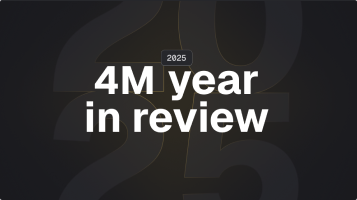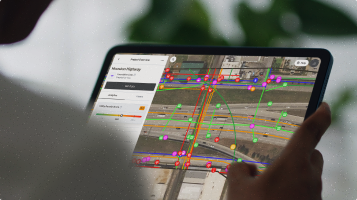How to Locate Underground Sewer Lines in 4 Steps
Written by

Published on
January 25, 2023


Table of contents
Every city, town, or community has a vast network of underground utilities transporting sewage from homes and offices to a central septic tank. Starting any infrastructural project means having to dig under the ground's surface. This can result in damage to existing sewer lines and other utilities. Damage may also occur while undertaking repair and maintenance work. Hence, locating sewer lines is necessary to eliminate damage to sewer lines in use. Accurate sewer maps are hard to come by, and any kind of large infrastructure project requires accurate information about sewer lines.
This article evaluates a 4-step strategy to locate sewer lines safely.
Why is it important to know where a sewer line is?
Knowing the location of sewer pipes is an essential step in every project that involves breaking the ground, no matter how small or large. Alongside sewer lines, other utilities criss-cross underground. These include water pipes that deliver potable drinking water to homes, gas pipelines, telecommunication cables, etc. Damage to these utilities can cause disruption and safety hazard to communities living nearby. With sewer lines, there is a risk of cross-contamination of water pipes as well. This results in hefty fines and repairs, which you can eliminate if you know the location of the pipes.
Here are four ways to locate underground sewer lines
If you were wondering how to find sewer maps, read on.
- Speak to utility companies
Sewage is often provided and maintained by government authorities in most states in the US. However, some communities may also have private organizations providing such infrastructure. In Texas, you can apply for the The Public Utility Commission’s (PUC) official digital mapping data. This includes maps for both retail water and sewer utilities issued to each holder of Certificate of Convenience and Necessity (CCN). Your project may overlap multiple CCNs and hence, PUC advises you to be careful while making such applications.
- Contact government authorities
Sometimes, utility maps may not be enough to locate sewer lines that have been left disused. Additionally, authorities may have plans for installing new sewerage infrastructure which may give rise to conflicts in the future. In addition to applying for maps at organizations such as the PUC in Texas, you must also contact local government authorities to get a green signal for your project. Depending on the city municipality's rules and regulations, some of this information may be classified. Contact the concerned authorities and request how to find sewer line maps.
- Gather historical data
Gathering historical data related to sewer infrastructure is important. In addition, you may also need to have ready access to other kinds of utilities data pertaining to water mains, telecommunication cables, and gas pipelines. As this subterranean infrastructure is constantly repaired, replaced, and maintained by different utility companies, you need to collate historical data from different agencies by liaising with them. Sewer line locating is a difficult task and utility coordination helps.
- Sewer mapping
Sewer line mapping services use various technologies to depict where buried sewers lie underground accurately. In Texas, calling 811 is essential before starting to dig. 811's team inspects the area where you will dig and help you with information regarding water and main sewer lines. Unfortunately, much of this data is not accurate and may be outdated.
4 steps to find the sewer lines efficiently
For error-free sewer line identification, consider opting for utility coordination and utility verification solutions. This ensures that you will have liaised with all authorities, utility companies, and government agencies before engaging in any sort of digging work. The sewer line information you collate from third-party services can be corroborated with the official versions. However, 4M’s services go a step further than data stored by government agencies. Hence, you can easily minimize damage and avoid utility conflicts.
Step 1: Use utility mapping
Utility mapping helps you detect the location of cables, pipes and sewer lines underground. An up-to-date GIS map of utilities eliminates the problem of misidentifying underground pipes, and causing damage to overlapping infrastructure. In other words, utility mapping is an essential first-step towards detecting sewer lines, and is an efficient method for large projects.
Step 2: Enquire at the zoning office of the location
Once you have access to the latest GIS map of utilities, you can contact the zoning office for procedural purposes. Zoning offices usually hold sewer pipeline maps in their custody. While some cities and communities may have accurate sewer maps, many neighborhoods and rural areas may lack maps. In addition, zoning offices that have access to buried sewer pipeline maps may not update the information frequently. Although the information that zoning offices store is not very reliable, it is an essential step to avoid utility conflicts.
Step 3: Consider risk mitigation strategies
Large infrastructure projects carry a number of risks which need to be mitigated. Examples include bursting of sewer pipes, contamination of potable water, melting of pipes due to extreme weather events, etc. Large projects should always take climate change into account while considering different utilities risk mitigation strategies. This also helps you avoid unforeseen expenses in terms of repairs and replacements in the future.
Step 4: Record every detail of sewer infrastructure
By now, you will have access to the latest GIS map of utilities, which includes underground sewer infrastructure as well. If you follow all the right steps, you will also have made useful connections at the local zoing office and ensured that steps have been taken to reduce different kinds of risks. However, you can still make the mistake of not monitoring the changes made to sewer lines by utility companies after you collate data. Keep an ongoing record of every detail of underground sewer infrastructure, and continue to monitor utilities data until your project achieves successful completion.
Trust in 4M - Sewer mapping technology par excellence
As you can see, most of the above methods are complex and involve the participation of different interest groups and technical entities. Ignoring any of these steps can result in hefty fines, expensive repairs and increase the chances of general safety and health hazards to the community. The perfect solution is to choose the right sewer mapping solution.
4M provides a reliable and up-to-date GIS map of sewer lines and other utilities above and below the ground. Our advanced mapping technology helps you avoid utility conflicts and accidents and complete projects as soon as possible. Our solution is based on advanced computer vision, satellite imagery, and comprehensive search records. In short, you can access our utility maps anywhere, anytime. More precisely, 4M's technological solution helps you complete your infrastructure projects successfully, and on time.
Recent blog posts

Our Newsletter
Join 7k infrastructure professionals
Get monthly insights on ways to build smarter, faster and safer with Utility AI.

.avif)




